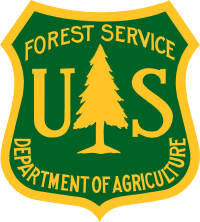 DAVIS, Calif.— A tree is more than just a landscape design feature. Planting trees on your property can lower energy costs and increase carbon storage, reducing your carbon footprint. A new online tool developed by the U.S. Forest Service’s Pacific Southwest Research Station, California Department of Forestry and Fire Protection (CAL FIRE)’s Urban and Community Forestry Program, and EcoLayers can help residential property owners estimate these tangible benefits.
DAVIS, Calif.— A tree is more than just a landscape design feature. Planting trees on your property can lower energy costs and increase carbon storage, reducing your carbon footprint. A new online tool developed by the U.S. Forest Service’s Pacific Southwest Research Station, California Department of Forestry and Fire Protection (CAL FIRE)’s Urban and Community Forestry Program, and EcoLayers can help residential property owners estimate these tangible benefits.
Using a Google Maps interface, ecoSmart Landscapes (www.ecosmartlandscapes.org) allows homeowners to identify existing trees on their property or select where to place new planned trees; estimate and adjust tree growth based on current size or planting date; and calculate present and future carbon and energy impacts of existing and planned trees. After registration and login, Google Maps will zoom in to your property’s location based on your street address. Use the tool’s easy-to-use point and click functions to identify your parcel and building boundaries on the map. Next, input the size and type of trees on your property. The tool will then calculate the energy effects and carbon storage that those trees provide now and into the future. Such information can help guide you on the selection and placement of new trees on your property.
Carbon calculations are based on the only methodology approved by the Climate Action Reserve’s Urban Forest Project Protocol for quantifying carbon dioxide sequestration from tree planting projects. The program allows cities, utility companies, water districts, non-profits and other non-government organizations to integrate public tree planting programs into their carbon offset or urban forestry programs. The current beta release includes all California climate zones. Data for the remainder of the U.S. and an enterprise version designed for city planners and large-scale projects is due out the first quarter of 2013.
“Planting a tree to shade your home is one of the most cost-effective ways to save energy and help the environment,” says Greg McPherson, a research forester at the Pacific Southwest Research Station who helped develop the tool. “You can use this tool to strategically place trees that will put money in your pocket as they mature.”
Future releases of ecoSmart Landscapes, which currently runs on Google Chrome, Firefox, and Internet Explorer 9 browsers, will include assessment tools for runoff reduction, water conservation, infiltration based on landscape configurations, rainwater interception due to trees, and fire risk to buildings.
Headquartered in Albany, Calif., the Pacific Southwest Research Station develops and communicates science needed to sustain forest ecosystems and other benefits to society. It has research facilities in California, Hawaii and the U.S.–affiliated Pacific Islands. For more information, visit www.fs.fed.us/psw/.
